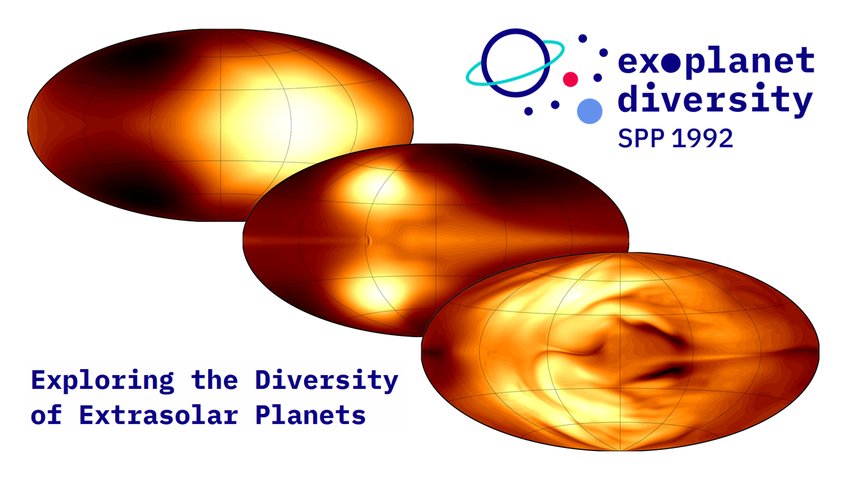
Structure and dynamics of Hot Jupiter Atmospheres
One of the biggest surprises of the first decades of exoplanet research is the numerous detections as well as the properties of Jupiter-sized gaseous planets orbiting their home stars at a very small distance and in synchronous orbit.

These so-called Hot Jupiters are hit on the permanent dayside by intense stellar radiation, which in turn drives violent atmospheric currents with velocities of up to several kilometers per second. As a result, the brightest point on the surface shifts in the direction of the wind, typically to the east. An effect that has already been measured with infrared telescopes. One goal of our project is to model such infrared phase curves as they can be seen from the Spitzer space telescope or the JWST. Furthermore, atmospheric temperatures up to several thousand Kelvin force us to reinterpret the atmospheric circulation as a magnetohydrodynamic flow interacting with the intrinsic magnetic field and the strongly enhanced electrical conductivity driven by thermal ionization.
